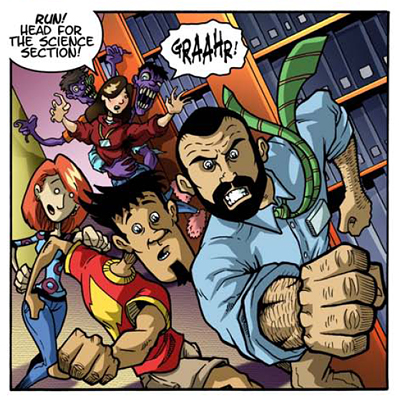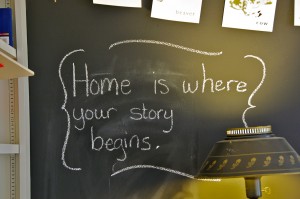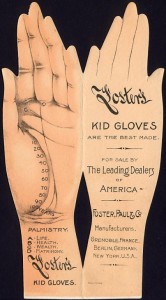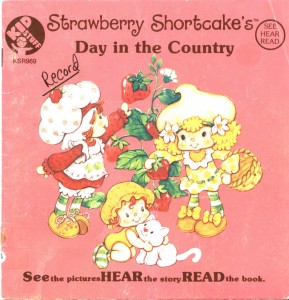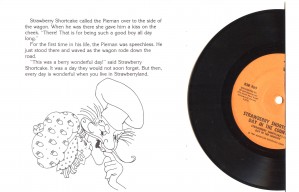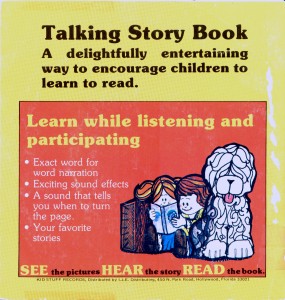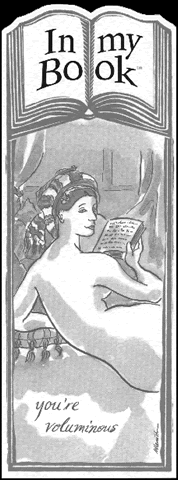
A few years ago, at the first annual Bookmark Collectors Virtual Convention, I met Robin Blum and discovered her fabulous bookmarks, In My Book®. In My Book® cards are more than just placeholders for readers, but markers of relationships as the bookmarks begin as greeting cards — complete with a red mailing envelope.
There are 15 styles, each beginning with the greeting, “In my book…” and concluding with literary pun sentiments, such as “you’re novel”, “you’re top shelf” and, my favorite, “you’re voluminous.” The entire front of the card is perforated, so tearing along the perforations changes the greeting card into a bookmark. It’s more than clever recycling, it’s a great way to give a gift that book lovers will actually love. The double-entendres are an added bonus. *wink*
Finally, we managed to find the time to do an interview…
In a world where people at least fear that physical paper books will disappear, why go into any business based on print books? And with such an ephemeral item yet!
Every so often, we need to reinvent ourselves as the circumstances surrounding our lives change with time and happenstance; I found a new calling at the age of fifty as an entrepreneur with a previously non-existent book-related product called In My Book®.
A bit of background: During WWII my immigrant parents settled in DC as newlyweds and Dad established his own small business, The Kronstadt (Advertising) Agency. Mom was a stay-at-home wife and mother. After attending DC public schools and then GWU with a major in drama, I set out for New York City and what I hoped would be a thriving theater career. I was a stage manager and lighting designer and had a fair amount of success in my twenties working in show biz. My thirties began in St. Thomas, Virgin Islands, where I served as the managing director of an amphitheater, the Reichhold Center; that’s also where I met my husband-to-be. We moved back to New York and when our sons were little, I followed my mother’s lead and stayed at home with them, later easing back into work for the children’s book publisher Kane/Miller (Everyone Poops plus many other great titles).
At a crossroads in my life (leaving my part-time job with Kane/Miller and with my children firmly established in middle school), I decided it was time for the next chapter (warning, more literary double-entendres ahead). With a lifelong love of reading and the know-how I acquired in publishing, I established my own start-up, In My Book®, “the greeting card and bookmark in one.”
I started the business in 1999 and sold my first cards in 2000, so the e-book e-ink rage was not yet in full swing.
The ‘fear that physical paper books will disappear’ has been just another obstacle in pretty much a decade of obstacles that I’ve encountered. But then everyone thought Columbus was crazy to attempt to sail to the East Indies.
First there was the dot.com boom, then 9/11, then the rise of chain bookstores and Amazon, then the disappearance of indie bookstores, then the collapse of the economy, then the spread of e-books and the quasi-obsolescence of publishers. I was and continue to be determined to introduce book lovers to the concept of “In My Book” cards and damn the torpedos as they say…full speed ahead.
Any thoughts on the print publishing industry?
I can’t envision a time when people won’t want to collect, read, share and display the books they’ve enjoyed and the books they continue to treasure as the foundation of their personal libraries. Books with illustrations and graphics in particular can never be surplanted by e-ink. The fact that e-books are quickly gaining in popularity does not necessarily reflect what method or mode of reading people will gravitate to in the future. For now, it’s new, it’s cool, it has a certain appeal as the latest thing/ le dernier mode.
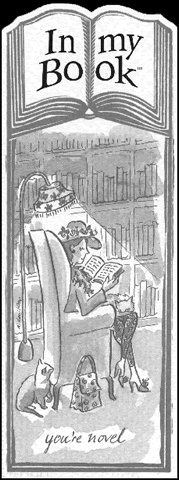
What I like best about In My Book is that they are the perfect “Just because” gift. And they are great add-ons when trying to “even up” at holiday time, etc. Oh, and they are a nice way to deliver things like gift certificates. Plus, they are the greeting card too. OK, so that’s more than one thing, but… I love them! When you discover them, it’s one of those, “Why didn’t I think of that?!” or “Why haven’t these always existed!” moments. What was the inspiration?
I had been working in publishing and knew that I could not advance past a certain stage with that organization. I wanted to do my own thing related to publishing and I started with the idea of a unique bookmark. I love paper and I’ve always liked the idea of changing the text on printed greeting cards. As the idea developed, and the bookmark expanded into a greeting card, the concept and format of In My Book® was born (the name was hit upon in the shower). In 2000, I hired a wonderful illustrator, Meredith Hamilton, to do the artwork.
I had a brief, but shinning I like to think, career in writing greeting cards; it’s a lot harder than it looks *wink* Where do you start when creating — with the greeting cards and occasion themes? Or is it primarily book (and pun!) based?
My advice to anyone thinking about starting a greeting card company is think twice. There are so many talented artists and varied styles of greetings available, but if you must follow your muse, be aware that the hardest part of making a success is not in designing or manufacturing the cards, it’s the challenging task of getting the cards sold and distributed in sufficient volume to make it work economically. And you have to do a lot of horn-tooting or be able to pay for someone to do it for you.
With the In My Book line, I defied the popular notion of sending greeting cards for holidays and special occasions. None of my cards are occasion-based; which means, who needs an occasion to send them, they’d ‘work’ for even an ordinary day! The cards could be used for a birthday or anniversary, but senders could also just to write a short note, enclose a gift certificate, give a check or cash (perfect size for that), or send them as a thank you note for a teacher, librarian, doctor or nurse, or as a graduation or promotion card. Enclose a pair of tickets to a show or send a ‘keep the date’ reminder. All of the fifteen styles are literary-oriented, either based on a particular genre (novel, mystery, adventure, poetry), or literary terminology (in between the covers, the last word, the happy ending). All are pun-based and light-hearted, and hopefully will continue to remind the recipient of the person who sent them the card as they continue to use it as a bookmark. They recycle!
Which designs are most popular? Do you think that’s based purely on book genre?
Most popular in terms of sales are classic, novel, rare, happy ending and top shelf. Voluminous is the least popular, although I think there are a lot of people who look at but don’t necessarily buy the beautiful Ingres-based nude. Americans are still puritanical. I hope that buyers select the card based on the person they plan on sending it to…but of course different styles cause different reactions and individuals’ tastes come into play.
Thanks for your time, Robin!
Now that you are sold on the idea of In My Book® cards, you can get them direct from Robin. Or, if you are out and about and wish to support local businesses and organizations, look for them at over 500 independent book and library stores — including at the Library of Congress store.
If you run a bookstore, museum shop, etc. or your historical society or library is looking for a way to raise funds, cards may be purchased at a wholesale rate.
PS More styles of In My Book® bookmarks/cards are presently in the works and will be available in Spring of 2012!
